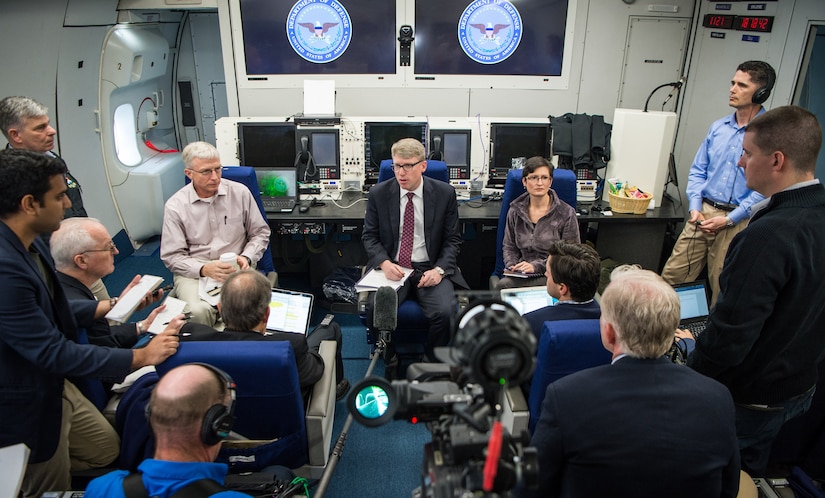By Jim Garamone, DoD News, Defense Media Activity
WASHINGTON -- The United States has deep interests in the
Indo-Pacific and will remain engaged in the region, U.S. officials said at the
Center for a New American Security conference here yesterday.
Alex N. Wong, the deputy assistant secretary of state for
East Asia and Pacific Affairs, said the United States has an unmatched alliance
structure in the region with treaties with Japan, Thailand, South Korea,
Australia, the Philippines and New Zealand.
There are more forward-deployed U.S. service members in the
Indo-Pacific region than anywhere else, Wong said, and they field the most
advanced weapons systems in the U.S. inventory.
And, the United States does more two-way trade with
Indo-Pacific countries than any other country in the world, he said, with the
United States the premier foreign investor in the region.
It is clear, Wong said, the international order based on the
rule of law the United States has championed in the Indo-Pacific since the end
of World War II has served the region well, and Chinese attempts to change that
would be bad for the nations of the region and the world.
David F. Helvey, the principal deputy assistant secretary of
defense for Asian and Pacific Security Affairs, said Defense Secretary James N.
Mattis’ National Defense Strategy identifies the Indo-Pacific region as the
priority for DoD.
‘We Have Deep Interests in the Region’
“This reflects the reality,” Helvey said. “We have deep
interests in the region that span the gamut of our relationships.”
The core principles of the region’s international order
based on the rule of law are long established, he said, and they include
freedom of navigation and overflight, peaceful resolution of disputes and
support and upholding international norms and standards for behavior.
Helvey said most nations in the Indo-Pacific region support
these principles and see the benefits of them each day via trade and economic
prosperity.
Since taking office, Mattis has make six trips to the
Indo-Pacific region to visit with established allies, and also meeting with
defense and military leaders from Indonesia, Vietnam and India, he said.
Wong said the Chinese want to replace the long-established
system with One Belt, One Road -- a system centered on benefiting China.
“You look at [One Belt, One Road], which was only announced
in 2013 … that is a response from China to catch up to the free and open
system,” Wong said. “We don’t really don’t need to respond to OBOR, we need to
empower our partners in the region to say that if China wants to play in the
area of regional integration … it has to play by the high standards; the best
value standards that will ensure broad prosperity and ensure the sovereignty of
the nations of the Indo-Pacific.”
Indo-Pacific Regional Alliances
Key to this is the network of alliances the United States
maintains with the nations of the region, Helvey said, noting the American
military conducts exercises each year to ensure interoperability with allied
and partner nations. Many of those nations, he said, are members of the
defeat-ISIS coalition and previous training has been invaluable in allowing the
militaries to work together.
“To the extent that we can work together, we can operate
together,” Helvey said. “We can perform different types or missions and
operations seamlessly in concert with our allies and partners. It represents
one of the best ways to maintain our strategic advantage.”
Helvey said the United States must pay attention to China,
which is a large U.S. trading partner and an emerging super power.
“How do we manage the competition with China in a way that …
ultimately redounds to our benefit?” Helvey posited. “Part of that is
maintaining open and stable means of communication with our Chinese
counterparts. Part of it is ensuring we are introducing and exercising the
right kind of risk reduction measures -- hot lines, confidence-building
measures -- so that when we are operating in close proximity … they are done in
a safe way.”

No comments:
Post a Comment